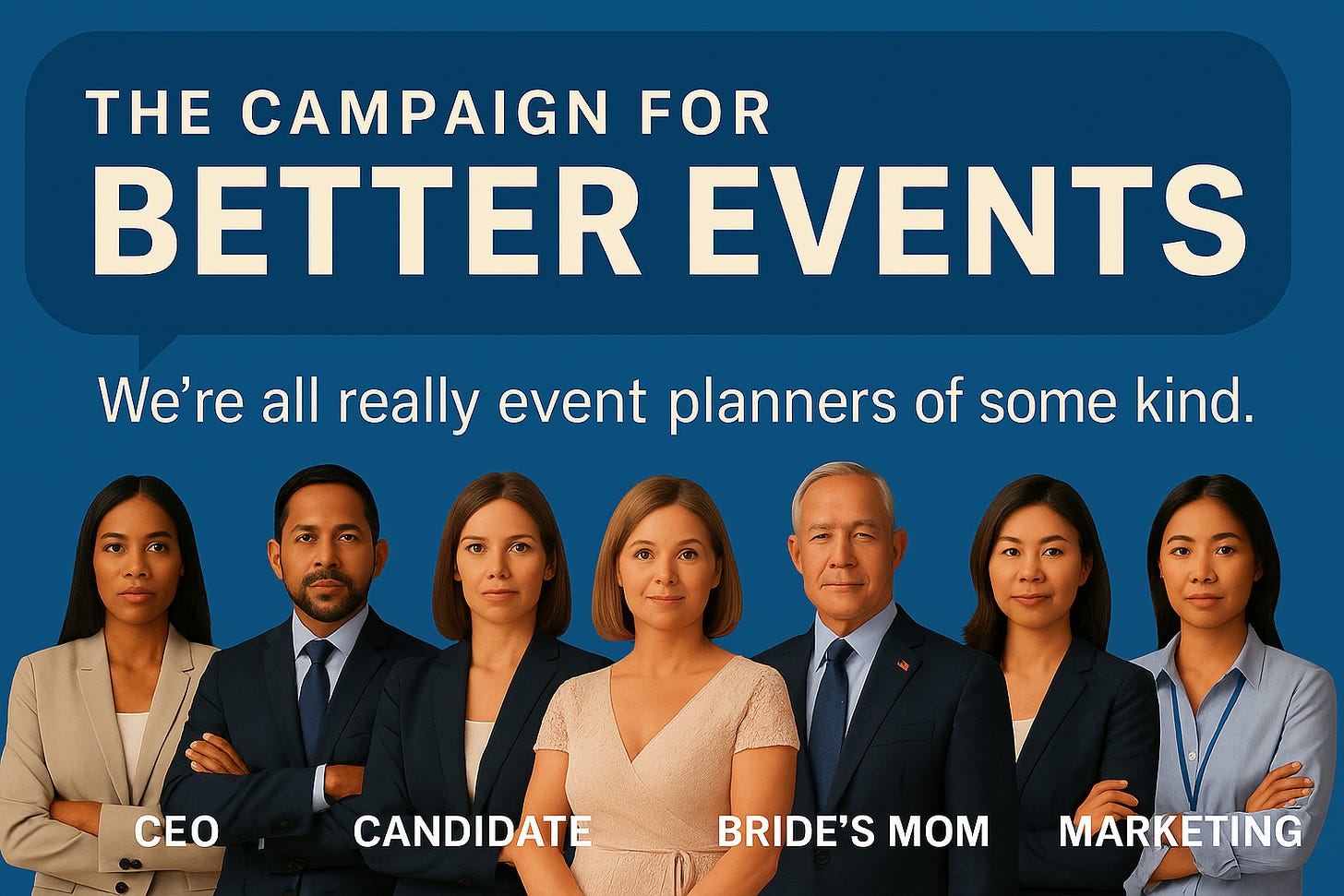The Campaign for Better Events Starts at the Top
Let’s stop pretending that event planning is someone else’s job.
The person who plans the event is rarely the one who truly owns it. A CEO might deliver the keynote. A senator might give the stump speech. A proud mother may beam through a wedding toast. But when a gathering falls flat, it’s rarely blamed on the people with titles. It’s pinned on the planner.
And yet, most of us are event planners of some kind.
This is …




